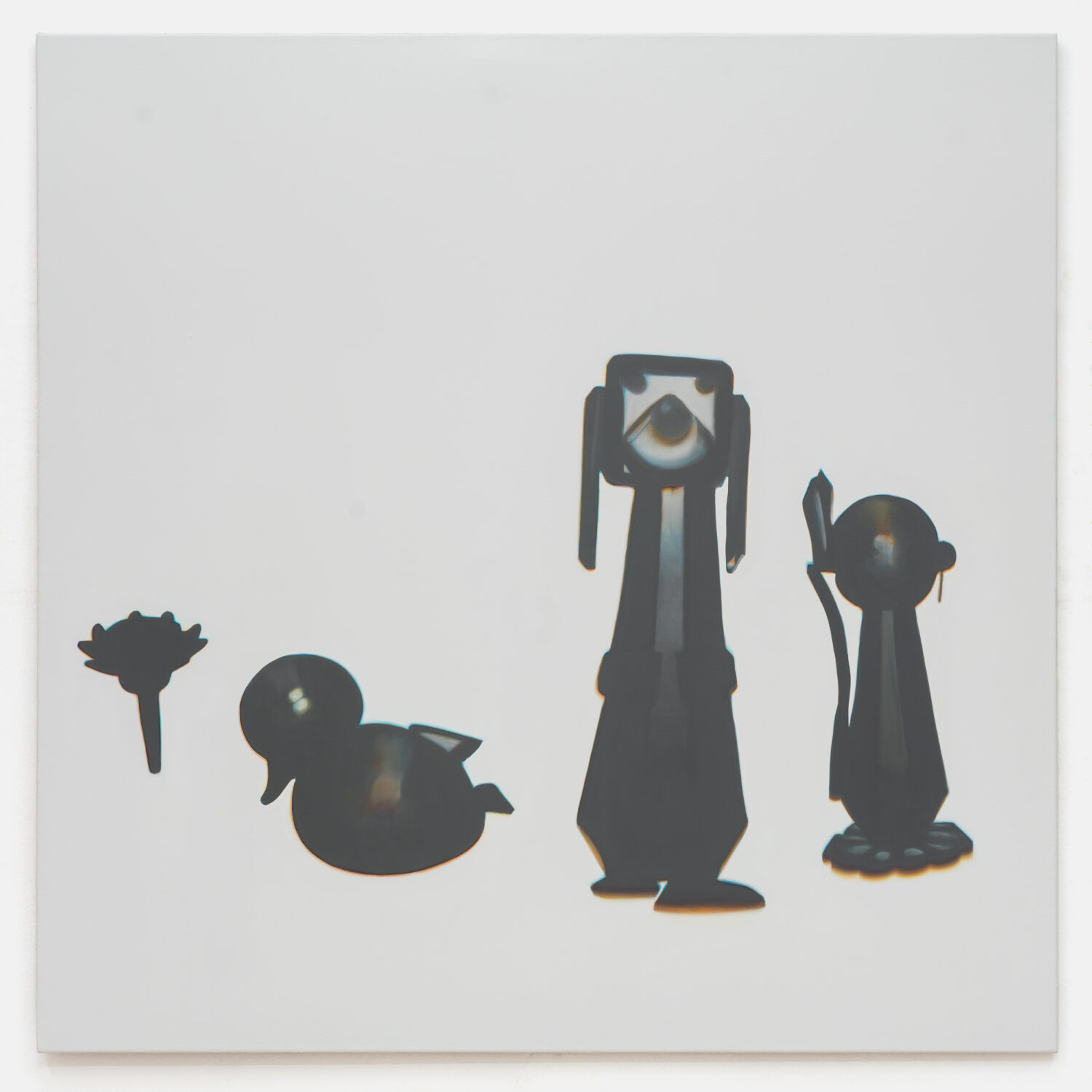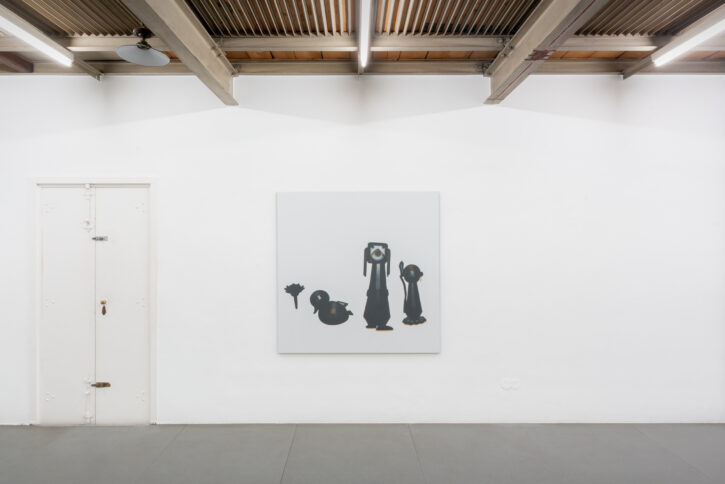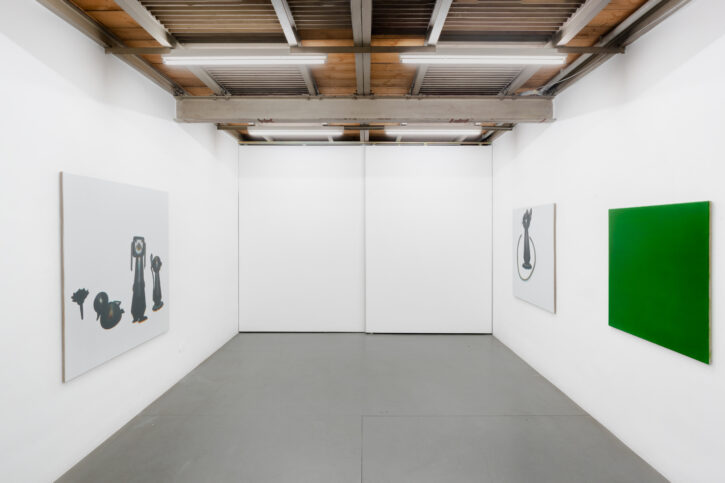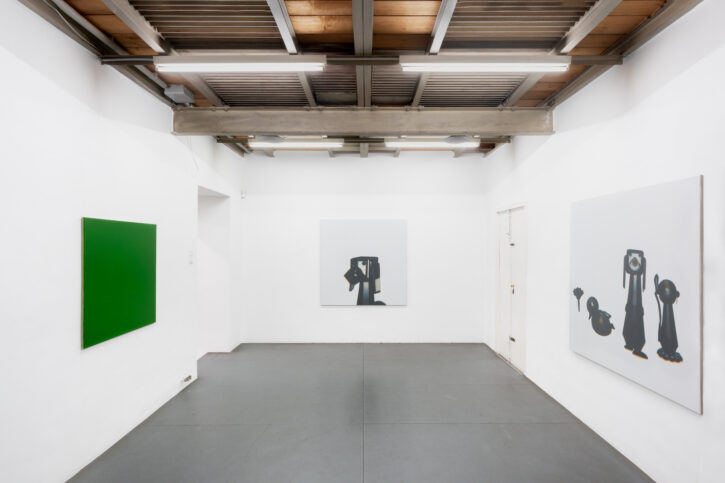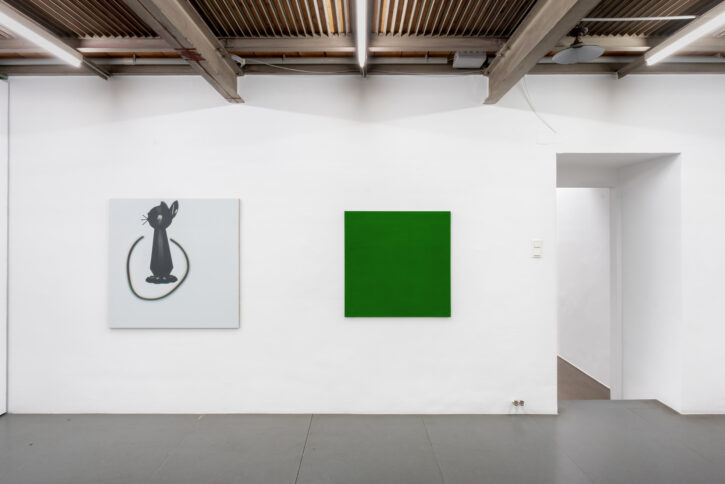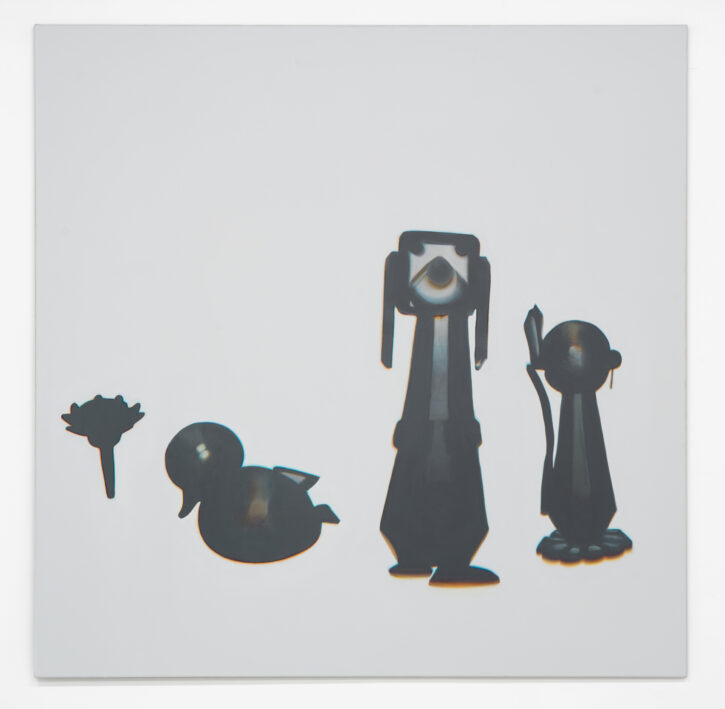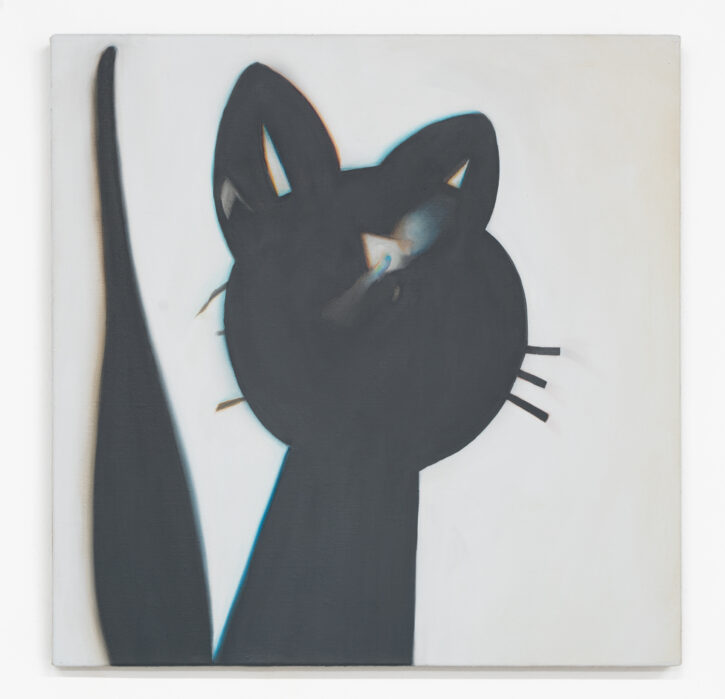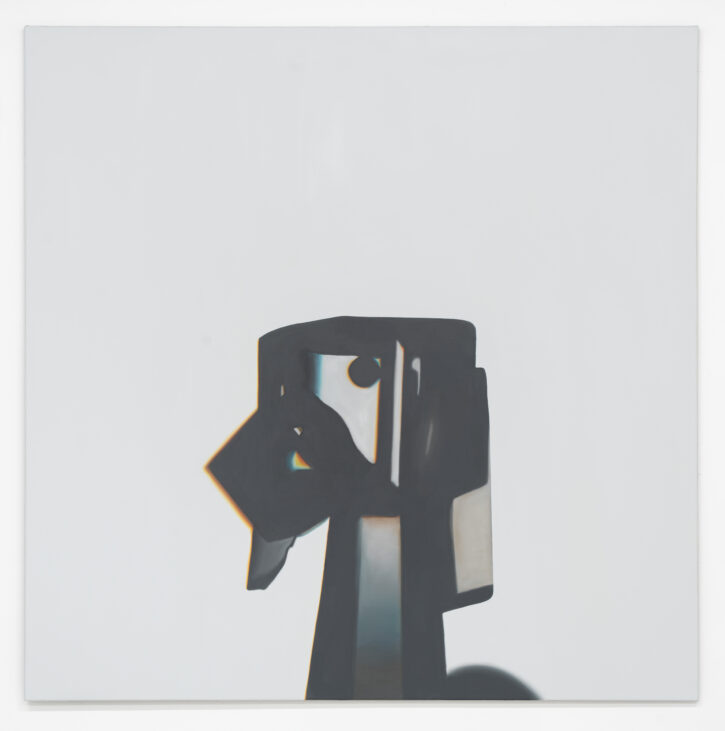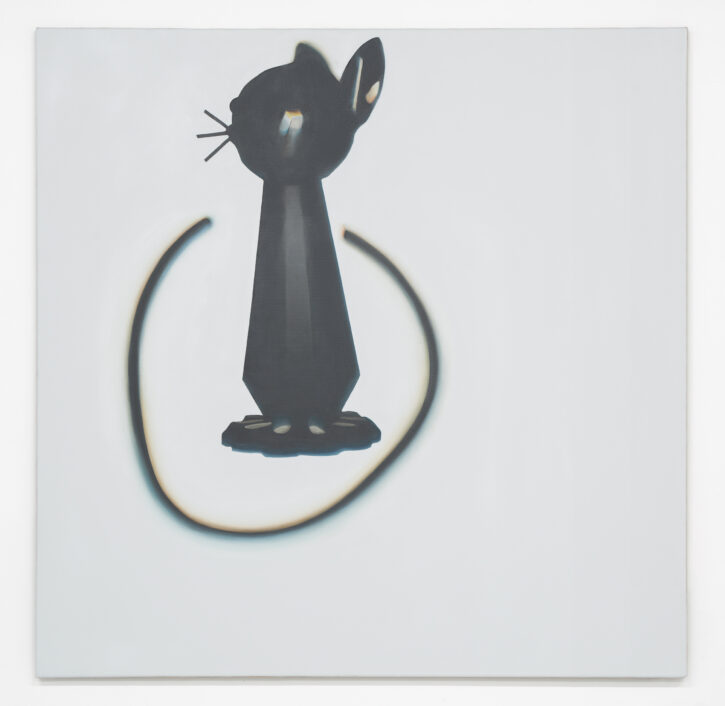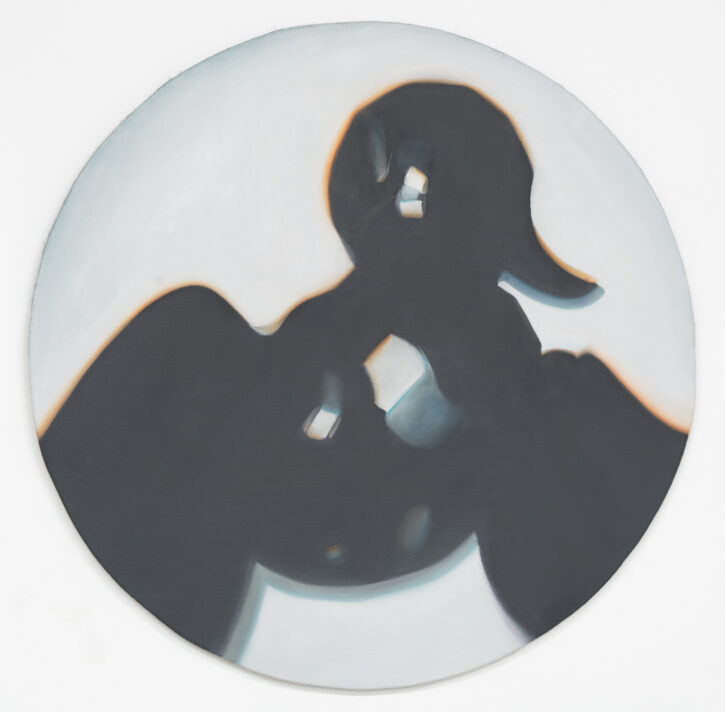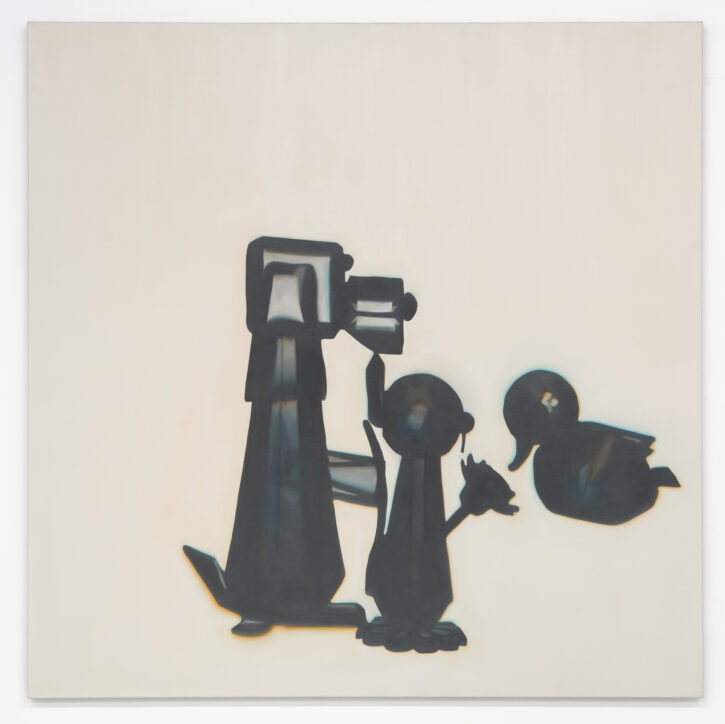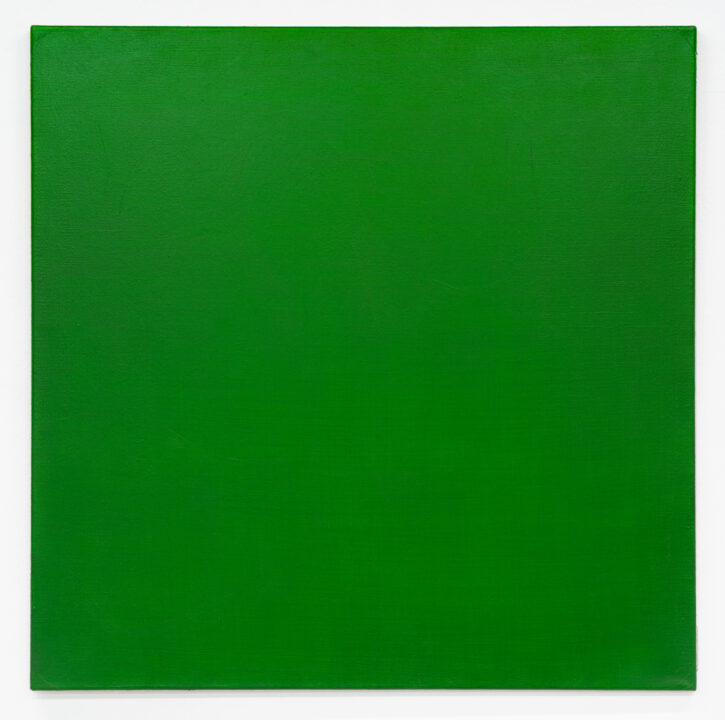Demian Kern
About the exhibition
For the current exhibition, Demian Kern placed some Swarovski figures from the “Silver Crystal” collection and a few plastic candlesticks on an overhead projector and then meticulously painted the projections of the various objects. What you see now in “Stylish Beauty 2,” for example, is not a cat, nor the image of one, but the image of the projection of an object that is supposed to represent a cat. Kern picked up the collectibles somewhere in his surroundings, looking for things that themselves already have a porous relationship to reality. The industrial design of the dog, cat, and duck, as well as the brightly colored cake decoration, refers not to the actual appearance of animals or flowers, but to similarly artificial artifacts that are meant to accessorize life and make it a little prettier. Swarovski profitably serves this longing for a glittering world, behind which, as a side effect, the company’s involvement in National Socialism fades.
While the translucent material casts dark shadows on the projection surface, the white light breaks up into all spectral colors at the sharply cut edges of the crystals, which are also transferred into the projection and consequently into the images. The translation from object to image represents a clear shift to the figures, which are hardly recognizable because the light from the overhead projector makes them appear as opaque surfaces, giving them a surprisingly graphic appearance. The indeterminate depth of the projector’s light space also appears in the image as an opaque matte gray ground. The silhouettes, which are contoured harder or softer depending on the translucency of the originals, create a peculiar kind of spatiality that is, however, constructed quite differently from the crystalline source material.
The blurring at the edges and the prismatic light reflections, underline the difference between three-dimensional object and two-dimensional representation even more, because they delay, irritate the perception. They make the viewer:inside stumble over the moment when one believes to recognize a cat, because the identification with the figures is continuously undermined by the structure of the pictorial representation. Instead, a mental movement is set in motion that switches back and forth between representationalism, abstraction, gesture, figure and ground, surface and volume, transparency and opacity, and light and shadow. Demian Kern explores this sequence of pictorial modalities, bringing the relationship of object to the representation of object into a flow.
This iridescent mobility is in tension with the still, frozen situations that capture the shadows cast by the fleeting arrangements. The static little figures, thrown together in a kind of no man’s land, are animated in reception by the succession of group scene and close-ups. The works, however, connect not only through the supposed narration, but equally through conceptual painterly categories. This is also the aim of the only painting that is several times out of the ordinary in the constellation of the exhibition: a monochrome painting that does not represent a reproduction of anything, but is pure pictorial invention. Here, once again, the painterly is invoked in contrast to the original. The green canvas offers an empty projection surface for imaginary afterimages of the seen forms. It represents a break, but at the same time it confirms the consistent logic of the investigations of the pictorial.
– Anette Freudenberger 2023
Demian Kern lives and works in Vienna. He studied at the Kunsthochschule Berlin Weissensee with Ralf Ziervogel and Nine Budde and at the Art Center Pasadena with Stan Douglas, Laura Owens and Bruce Hainley.
Further informations:
